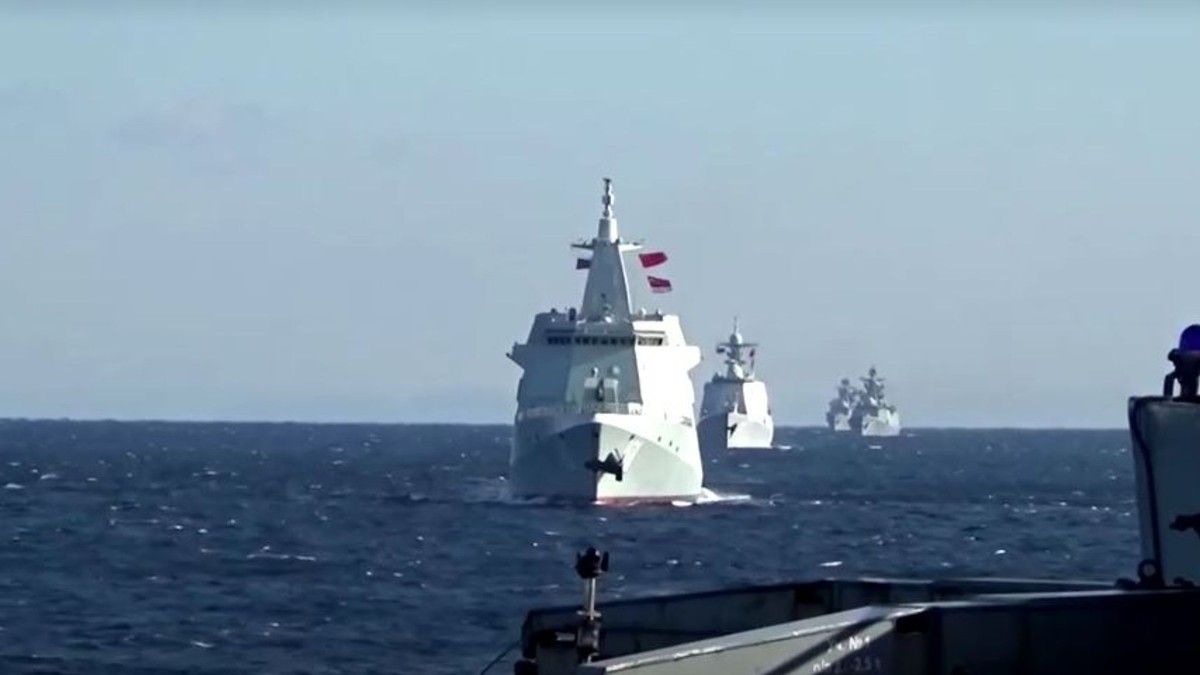The Russian Navy and the Chinese People’s Liberation Army Navy (PLAN) have completed a joint patrol in the central Pacific Ocean. The mission underlines stronger cooperation between Moscow and Beijing in the Asia-Pacific.
Anti-Submarine Drills
The Russian Pacific Fleet said the patrol involved anti-submarine warfare (ASW) training. The ships worked with deck-based aircraft to detect and track submarines. These drills improved readiness and tested joint coordination.
At the end of the route, the ships split and continued alone. Both navies praised the patrol and thanked each other for smooth teamwork.
Long-Distance Mission
The Russia-China joint patrol covered more than 6,000 nautical miles. The distance showed the fleets’ ability to sustain operations far from their home ports.
Russia deployed the Admiral Tributs anti-submarine ship. China contributed the Shaoxing destroyer and the Qiandaohu supply ship. The vessels left Vladivostok on August 7. Before the patrol, the ships joined the Russia–China 2025 Maritime Interaction exercise. A stop in Kamchatka allowed the crews to resupply before continuing their mission in the Pacific.
Read more: Sikorsky Wins $43 Million US Army Contract to Modernize Black Hawk Fleet
This was the fifth joint patrol since 2021. Its goals included:
- Strengthening naval cooperation.
- Building readiness for blue-water missions.
- Protecting economic activity at sea.
- Supporting peace and stability in the Asia-Pacific.
Analysts argue the patrols go beyond training. They see them as a way to balance U.S.-led coalitions in the Pacific. The missions also highlight a shift toward a multipolar security order.
Strategic Impact
Regular patrols build habits of cooperation. They improve command-and-control systems, sharpen ASW skills, and project a visible presence across vital sea lanes.
For Russia and China, the operations also send a diplomatic signal. They stress support for freedom of navigation while defending national interests.
Regional alliances like AUKUS and the Quad continue to grow. In response, Russia and China are expected to deepen their naval ties. Future patrols may expand to wider parts of the Indo-Pacific and include more air-sea operations.
Each successful mission strengthens the Russia–China naval axis. Step by step, it is becoming a central factor in the Asia-Pacific’s security landscape.
Table of Contents
ToggleJaveria Sajid
Javeria Sajid is an Aerospace Engineering student from NUST with a background in technology and a sharp focus on the global political landscape and defence innovation. She writes to make complex defence technologies understandable, and aspires to bridge journalism, policy, and engineering in her work.
-
Javeria Sajid

Muhammad Mudassir
Muhammad Mudassir is a student of Defence and Strategic Studies at Quaid-i-Azam University, Islamabad. His areas of interest include defence analysis, strategic research, and geopolitical studies.
-
Muhammad Mudassir
-
Muhammad Mudassir
-
Muhammad Mudassir












